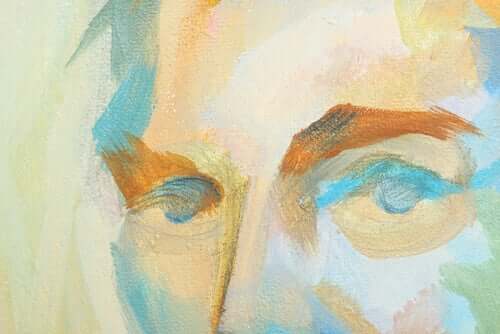From art therapy to psychosis, it is observed that this type of therapeutic work can contribute to the strengthening of various functions, improves self-capacity and self-esteem, is a space that contains psychotic anxiety and is a vector of interpersonality. relationships (1). That’s why we focus on art therapy as a possible psychotherapeutic intervention in psychosis.
What is psychosis? It is defined as “a serious mental disorder, with or without organic damage, characterized by loss of contact with reality and worsening normal social functioning”. As a complex disorder, there are a variety of possible treatments and therapies. Art therapy, in this sense, is oriented to the use of artistic materials for self-expression and reflection, in the presence of a trained artetherapist (2).
- Psychotherapist Katherine Killick argues that in psychotic people.
- Art objects support projected material until patients can relate to the therapist’s mind.
- The work is oriented to provide a structure with times and limits that promote notions of time and structure for the mind.
Thus, Killick explains that one of the therapist’s functions in this psychotherapy through art is to develop forms of mediation between concrete and symbolic thinking; In addition, in the words of the author, one of the central aspects of the therapeutic use of art in people with psychosis is to address problems with the limits of self and the formation of symbols.
In the field of art therapy, Killick has identified three areas of communication that are relevant when working with people with schizophrenia, we are talking about interpersonal, intermediate and intrapersonal communications. They are interdependent and continually influence each other.
It evokes, according to Reyes, the potential for imaging, the therapist keeps it with the person. In this area, the person develops a unique interaction with artistic materials that can heal the formation of symbols.
In this area, a play space is created in which the person can experiment with objects in a symbolic activity.
In this area is the part of the relationship between the patient and the therapist who understands the images.
Creating something new is doing; to do is to produce, and what does production have? not from a utilitarian point of view, but from a psychosocial point of view? social, emotional and cognitive value for the subject involved in the task. The word create derives from the Latin creare, which means that something begins to exist where there was nothing. The word is also etymologically associated with growth (4).
The relevance of studying creativity in psychosis is linked to a change in the vision of mental illness, although it is a serious disease that results in significant cognitive, emotional, emotional and social decline, it must also be recognized that everyone has potential. promoted and developed, giving the individual another place and another social role within the community (5).
We know that psychosis is mainly treated by individual and pharmacological psychotherapy, however, this type of treatment often does not achieve the objectives of interdisciplinary treatment, so art therapy can be very useful in the treatment of patients with serious problems such as psychosis. (5).
Artetherapy is considered to be a form of intervention located in the supporting psychotherapies group. Supportive therapy is “a long-term therapy aimed at maximizing the patient’s strengths: restoring and recognizing their psychological balance, but trying to minimize the therapist’s dependence” (6).
Art is a flexible and plastic language. It is a form of communication between the patient and his inner world, in psychosis the relationship with the outside world is altered, so art can serve the subject to communicate his feelings, fantasies and fears, on the other hand can help the health professional identifies with certain experiences and experiences of the patient (5).
According to authors Maria Aranguren and Tania Elizabeth Leon, the effects that art can provide as psychotherapy are:
Thus, it seems clear that art therapy in psychosis can promote the development of psychological states and abilities that can induce psychic changes (6), with therapies of this type sought to improve the quality of life of people with psychosis, seems important. take them into account, at least as complementary treatments.

